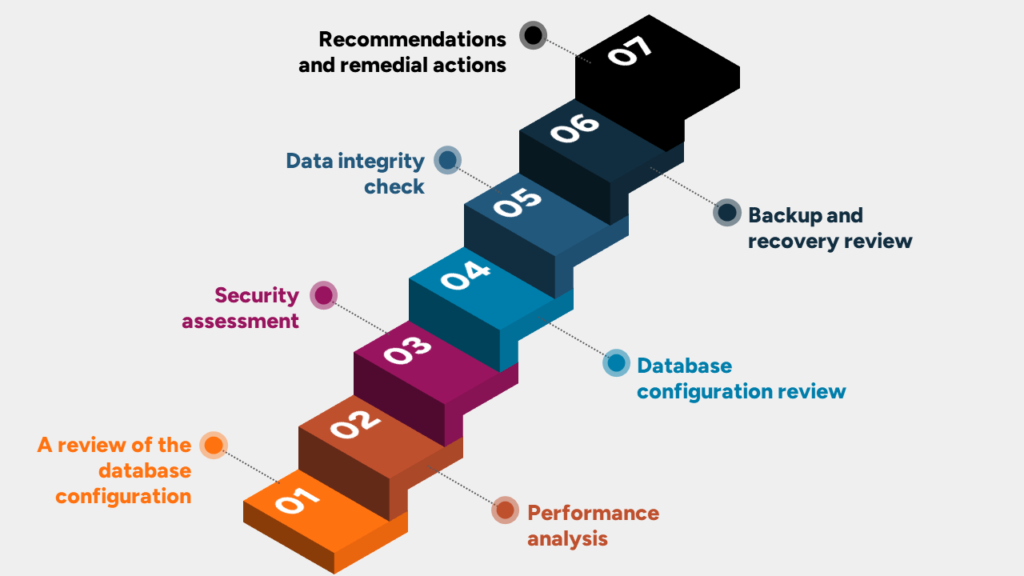Database Health Check
A database health check is a process for reviewing and evaluating the current status of a database system to ensure that it is operating efficiently, securely, and in accordance with established standards.
The purpose of a database health check is to identify problems or areas for improvement and make recommendations to address them.
A database health check usually includes the following steps:

1
A review of the database configuration
A review of configuration settings and parameters to ensure they are optimised for performance and security.
2
Performance analysis
An analysis of database performance metrics, such as response time, resource utilisation, and query optimisation, to identify potential performance bottlenecks.
3
Security assessment
An assessment of database security, including user access control, data encryption, and database firewall configuration, to identify potential security risks.
4
Database configuration review
A review of configuration settings and parameters to ensure they are optimised for performance and security.
5
Data integrity check:
A review of the data stored in the database to ensure that it is complete, accurate and consistent.
6
Backup and recovery review
A review of the backup and recovery strategy to ensure that data is properly backed up and can be quickly and easily restored in the event of a disaster.
7
Recommendations and remedial actions
A report on the results of the database health check, along with recommendations to fix problems or improve performance and security.
The purpose of a database health check is to proactively identify and address potential problems before they become critical.
By conducting regular database health checks, organisations can ensure that their database systems are operating efficiently, securely and in accordance with established standards, while improving the overall performance and reliability of their systems.
